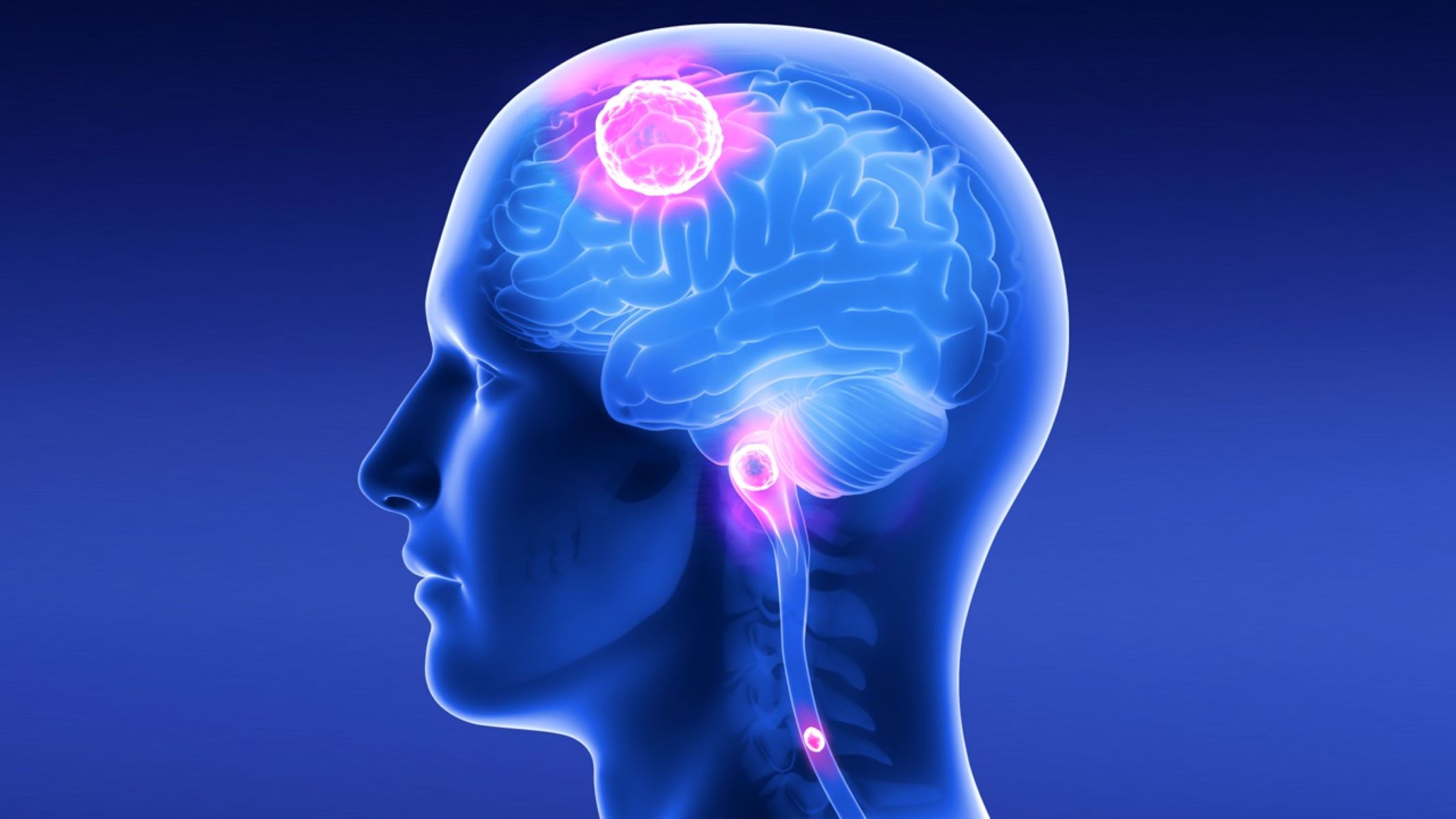
Astrocytoma is a type of brain tumor that arises from star-shaped glial cells called astrocytes. These cells support and connect nerve cells in the brain and spinal cord. Astrocytomas make up 60% of all brain tumors, making them the most common type of glioma. They are classified into four grades by the World Health Organization (WHO), ranging from Grade I (slow-growing) to Grade IV (highly aggressive). Symptoms can vary widely, including headaches, seizures, and cognitive difficulties. Diagnosis involves neurological exams, imaging tests like MRI, and often a biopsy. Treatment options include surgery, radiation, chemotherapy, and emerging therapies like immunotherapy. Understanding astrocytoma is crucial for early diagnosis and effective treatment.
What is Astrocytoma?
Astrocytoma is a type of brain tumor that arises from astrocytes, star-shaped cells in the brain and spinal cord. These tumors can vary widely in their behavior and prognosis.
-
Definition and Origin: Astrocytoma develops from astrocytes, which are a type of glial cell in the brain and spinal cord. These cells provide supportive tissue and play a crucial role in maintaining neuron health.
-
Prevalence: Astrocytomas make up 60% of all brain tumors, making them the most common form of glioma.
How are Astrocytomas Classified?
Astrocytomas are classified into four grades by the World Health Organization (WHO) based on their growth rate and potential to infiltrate nearby brain tissue.
-
Classification: The grades range from I (low-grade, non-infiltrating) to IV (high-grade, highly infiltrative).
-
Grade I Astrocytoma: Also known as pilocytic astrocytoma or juvenile pilocytic astrocytoma (JPA), this type is typically non-infiltrating and grows slowly. It is most common in children and teens.
-
Grade II Astrocytoma: Known as low-grade astrocytoma or diffuse astrocytoma, this type usually infiltrates surrounding tissue and grows relatively slowly. It is most common in adults aged 20 to 40.
-
Grade III Astrocytoma: Called anaplastic astrocytoma, this type is more aggressive and grows faster than Grade II astrocytomas. It often involves genetic alterations.
-
Grade IV Astrocytoma: Known as glioblastoma multiforme (GBM), this is the most aggressive and malignant form. It grows rapidly and infiltrates surrounding brain tissue.
What Symptoms Do Astrocytomas Cause?
Symptoms can vary based on the tumor's location and grade, affecting different parts of the brain and body.
-
Symptoms: General symptoms include headaches, nausea, vomiting, cognitive difficulties, personality changes, and gait disorders. Localizing symptoms may include seizures, aphasia, or visual field defects.
-
Symptoms of Low-Grade Astrocytoma: These are often subtle and may include headaches, seizures, impaired vision, mental state changes, coordination problems, and speech issues.
-
Symptoms of High-Grade Astrocytoma: These are more pronounced and may include rapid progression of neurological deficits, increased intracranial pressure, and seizures.
How is Astrocytoma Diagnosed?
Diagnosing astrocytoma involves a series of tests and examinations to determine the tumor's characteristics.
-
Diagnosis: A comprehensive neurological examination is essential to evaluate the extent and impact of the tumor on the central nervous system (CNS).
-
Role of Imaging Studies: Imaging tests such as MRI, CT scans, and PET scans help determine the location and size of the tumor.
-
Biopsy and Histological Analysis: A biopsy involves removing a sample of tissue from the tumor to confirm the diagnosis and determine the tumor's grade.
What Treatment Options are Available?
Treatment varies depending on the tumor's grade and location, with several options available to manage the condition.
-
Treatment Options: Common treatments include surgery, radiation therapy, chemotherapy, and targeted therapy.
-
Surgical Intervention: Surgery aims to remove as much of the tumor as possible while minimizing damage to surrounding brain tissue.
-
Radiation Therapy: Often used with surgery for high-grade astrocytomas, radiation therapy involves using high-energy rays to kill cancer cells.
-
Chemotherapy: This involves using medications to kill cancer cells and may be used as an adjuvant therapy after surgery or as a primary treatment for inoperable tumors.
-
Targeted Therapy: This involves using medications that specifically target cancer cells, such as those targeting the EGFR pathway.
What Genetic Factors are Involved?
Several genetic alterations are associated with the development and progression of astrocytomas.
-
Genetic Alterations: These include the deletion of tumor suppressor genes on chromosomes 22q, 9p, 11p, 13q, and 19q, as well as the overexpression of the EGFR gene.
-
Genetic Mutations: Mutations in the PDGF system and inactivation of the Tp53 gene contribute to the tumor's aggressiveness and resistance to treatment.
Are There Environmental Risk Factors?
While no definitive environmental factors have been linked to astrocytoma, certain conditions can increase the risk.
-
Environmental Factors: Rare hereditary syndromes, therapeutic radiation, and immune suppression leading to brain lymphomas are known causes of brain tumors.
-
Risk Factors: Genetic syndromes and previous exposure to ionizing radiation can increase the risk of developing astrocytomas.
How Important is Early Diagnosis?
Early diagnosis and prompt treatment are crucial in mitigating the serious consequences associated with astrocytomas.
-
Importance of Early Diagnosis: A comprehensive history and physical examination are essential in establishing a timeline of symptom development and identifying potential risk factors.
-
Neurological Examination: This examination assesses cranial nerve function, motor strength, coordination, sensory perception, and reflexes.
What Role Do Imaging Studies Play?
Imaging studies are critical in diagnosing and managing astrocytomas, providing detailed information about the tumor.
-
Imaging Modalities: MRI, CT scans, and PET scans help determine the tumor's location, size, and extent of infiltration.
-
Biopsy Techniques: Techniques vary depending on the tumor's location and accessibility. In some cases, a needle biopsy may be performed to obtain tissue samples from inoperable tumors.
What Challenges Exist in Treatment?
Despite advances in treatment, astrocytomas remain challenging to manage due to their complex nature.
-
Treatment Challenges: The tumor's infiltrative nature and genetic heterogeneity make it difficult to achieve complete resection.
-
Blood-Brain Barrier: This barrier limits the effectiveness of chemotherapy and targeted therapy.
What Emerging Therapies are Being Developed?
Research is ongoing to develop new and more effective therapies for astrocytomas.
-
Emerging Therapies: These include immunotherapy, gene therapy, and nanotechnology-based treatments.
-
Phytochemicals in Treatment: Natural substances such as Taxol, resveratrol, vincristine, quercetin, vinblastine, tetrandrine, and arteannuin have shown potential in treating multiple malignant tumors, including astrocytomas.
How Important is an Interprofessional Team Approach?
Effective management of astrocytoma requires a collaborative approach involving various healthcare professionals.
-
Interprofessional Team Approach: This includes neurosurgeons, neurologists, radiation oncologists, medical oncologists, and other healthcare professionals.
-
Clinical Management: Involves thorough history taking, physical examination, imaging studies, and histological analysis.
How Can Patient Education Help?
Educating patients and their families about astrocytoma is essential for effective management.
-
Patient Education: Helps patients and their families understand the diagnosis, treatment options, and potential outcomes.
-
Quality of Life: Addressing symptoms such as seizures, headaches, and cognitive difficulties is crucial to improving the patient's overall well-being.
What is the Global Impact of Astrocytoma?
Astrocytoma significantly impacts patients worldwide, contributing to both mortality and morbidity.
-
Global Incidence: According to the Global Cancer Statistics 2022 (GLOBOCAN), 25,050 patients were newly affected by brain and other nervous system cancers in the United States, with 18,280 deaths attributed to these cancers.
-
Mortality and Morbidity: High-grade forms of the tumor have a poor prognosis, with a significant number of patients succumbing to the disease.
What are the Latest Trends in Treatment?
New trends in treating astrocytomas aim to improve treatment efficacy and reduce side effects.
-
Emerging Trends in Treatment: Include the use of immunotherapy, gene therapy, and nanotechnology-based treatments.
-
Surgical Techniques: Highly specialized techniques aim to remove as much of the tumor as possible while minimizing damage to surrounding brain tissue.
-
Radiation Therapy Techniques: External beam radiation therapy (EBRT) and stereotactic radiosurgery (SRS) are common techniques used to deliver precise doses of radiation to the tumor site.
-
Chemotherapy Agents: Include alkylating agents, antimetabolites, and targeted therapies such as temozolomide, carboplatin, and bevacizumab.
Understanding Astrocytoma
Astrocytoma is a complex brain tumor that arises from astrocytes, the star-shaped glial cells in the brain and spinal cord. These tumors are classified into four grades, ranging from slow-growing Grade I to aggressive Grade IV, also known as glioblastoma multiforme. Symptoms vary based on the tumor's location and grade, including headaches, seizures, and cognitive difficulties. Diagnosis involves neurological exams, imaging tests, and biopsies. Treatment options include surgery, radiation, chemotherapy, and emerging therapies like immunotherapy. Early diagnosis and a multidisciplinary approach are crucial for better outcomes. Genetic mutations and environmental factors play roles in the tumor's development. Ongoing research aims to improve treatment and quality of life for affected individuals. Understanding astrocytoma's intricacies helps in managing this challenging condition effectively.
Was this page helpful?
Our commitment to delivering trustworthy and engaging content is at the heart of what we do. Each fact on our site is contributed by real users like you, bringing a wealth of diverse insights and information. To ensure the highest standards of accuracy and reliability, our dedicated editors meticulously review each submission. This process guarantees that the facts we share are not only fascinating but also credible. Trust in our commitment to quality and authenticity as you explore and learn with us.


